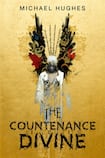
The age-old battle between good and bad looms large in The Countenance Divine, and not just in its storyline. Parts of Michael Hughes's epic debut will enthral readers but there are also long passages of theological babbling and many other diversions that drag down the conspiracy theories at the heart of the book.
A dramatis personæ at the beginning shows the scope of the novel, set over a whopping four centuries. Centred on prophecies of the end of the world in the Book of Revelations, each plot looks at how life is created and taken away, of how every generation shares the same fear that they have messed things up and deserve to be punished.
There is much to praise in the Northern Irish writer’s debut, particularly in its early parts. The first narrator is Chris, a computer programmer in London in 1999 who works for a company trying to stop the Y2K virus. Plain-speaking and sympathetic, Chris draws us easily into his world of office banter and post-work pints.
A burgeoning relationship between Chris and his sharp-tongued Goth colleague Lucy brings a sense of foreboding evident from the outset: “He kept feeling like they were being watched. Once or twice he convinced himself a man in a mask was following them.”
There is an anxious modernity to the voice that nails the zeitgeist: “Sometimes Chris was afraid that everything could only get worse. He knew that any closed system left alone would eventually tend to decay.”
A second storyline, set in London’s East End in 1888 is told in epistolary form, through the convincingly chilling voice of a deranged man who is gruesomely murdering women at “his master’s” behest. No points for guessing who this as, writing to both police officers and his victims, the killer signs his letters “From Hell”.
Hughes captures the depravity in a dialect that shocks from the outset, and manages to sustain this effect throughout the novel: “I sent you half the Kidne I took from one women prasarved it for you tother piece I fried and ate it was very nise.”
Distinct voices
Born and raised in Keady, Co Armagh, Hughes read English at Oxford University, trained in theatre at the Jacques Lecoq School in Paris, and has worked as an actor under the professional name Michael Colgan. Hughes studied creative writing at Royal Holloway and at London Metropolitan University. His drama background comes through in his ability to employ a range of distinct voices.
After Chris and the killer, the author tries his hand at invoking a young William Blake in 1777. A poet and prophet, Blake is given to grand pronouncements that initially intrigue: “A vision is brewing. He wishes it gone; then burns with guilt for the ingratitude.” His wife, Catherine, is a good counterpoint to his fancies: “’You are a prophet, of course. We must allow your humours.”
These early scenes, unfortunately, give way to a plot that is convoluted and at times downright ridiculous. Blake goes in search of the rib of the dead poet John Milton, whose body has been recently exhumed. He subsequently finds “a rare account of John Milton’s later days” written by the poet’s apprentice, Thomas Allgood, who has been persuaded by certain malevolent factions to spy on Milton.
Although the reader is told that “a brief perusal reveals many wonders, and many terrors too”, these fail to come to life. As the story continues, a series of confusing and interminable chats seen through Allgood’s perspective ensue. All the while, Blake the engraver is bringing Milton back to life through the ground-up dust of the rib: “His bottled demon. His Milton- Golem-Homunculus.”
There is more to come. In 1666 (alert readers and conspiracy theorists will have noted the numerical pattern), we meet Milton himself, his apprentice Allgood, and his nemesis, Henry Cock, who Milton fears “as I have feared very few such”. There is the Great Fire, in which Milton’s work burns, lots of prophecies, and a long-winded series of conversations on the nature of creation, legacy, and good versus evil.
The action to all this theologising and theorising happens in the 1999 and 1888 stories, by far the most interesting parts of the book. Sex and death intermingle in both. The Jack the Ripper-like murderer targets prostitutes. In 1999, Chris finds himself attracted to Lucy but repelled by her requests to “cut her open and then leave”.
While each of the stories is set exactly 110 years apart – the devil’s number, 666, is its binary notation – Hughes is straining to connect all the threads by the book’s end. Historical notes at the finish explain the genesis of the ideas, but do little to improve its impact.
"Ex nihilo nihil fit," says one of the characters along the way – nothing will come of nothing. It would be unfair to say that nothing has come of Hughes's imaginative writing, but by end of The Countenance Divine readers will be left wondering what the point was overall.











